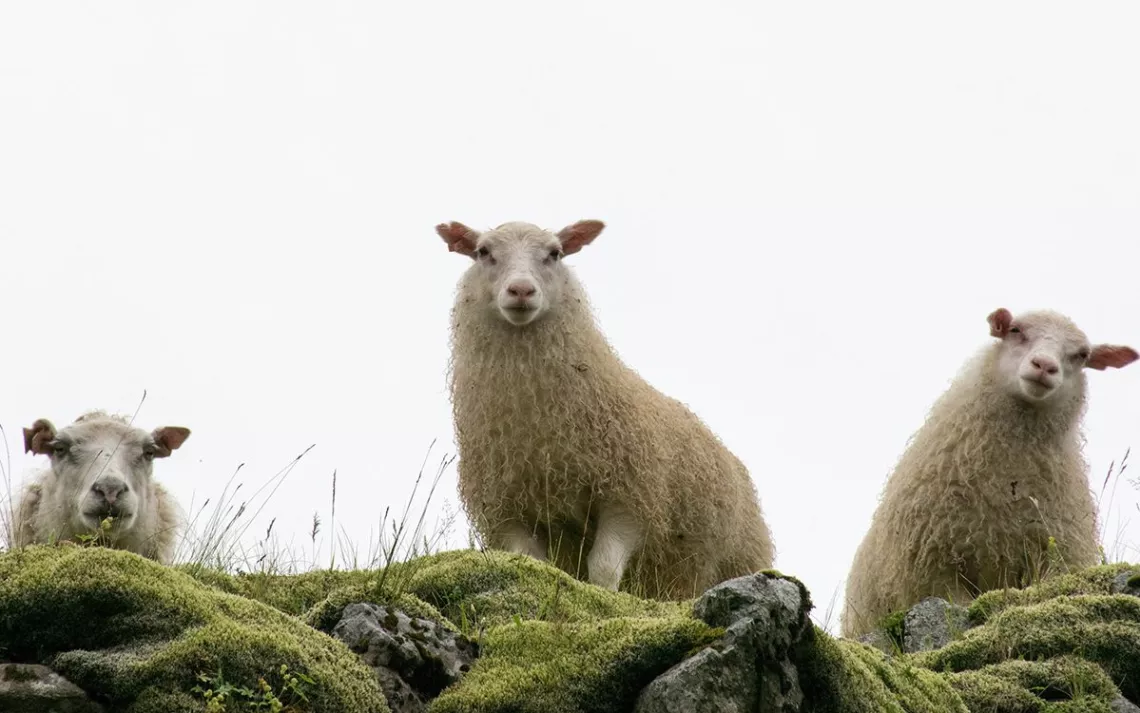6 Plant-Based Alternatives to Animal-Derived Gear Materials
Cactus leather and vegetable ivory and vegan wool, oh my!
If the contents of my local grocery store’s cold case and the videos Netflix is suggesting I watch are any indication, I am not the only one experiencing guilt around food—the type that’s more about climate than calories. Having embraced a vegan diet for a while now, I find it pretty easy to eschew beef burgers. But as an avid adventurer, I’ve had a much harder time giving up my leather hiking boots.
So many of the materials we rely upon to access the outdoors are derived from animals, which of course imbues time spent in the natural world with all manner of ecological and moral complications. Fortunately, innovative companies are now developing plant-based alternatives to animal-derived fabrics. Which might mean that in a few years, we can all save up to buy the hiking boot version of an Impossible Burger. Here’s a look at some of the ways in which brands are turning plants into products.
According to the Sustainable Apparel Coalition’s Higg Index of Sustainability, silk has the highest environmental impact of any textile. The need to keep silk plants at a constant temperature consumes huge amounts of energy, as does drying silkworms’ cocoons. Spiber, a Japanese biotech firm, has created a plant-based alternative that purports to replace silk, as well as petroleum-based fabrics like polyester. The “brewed protein” that Spiber produces has already been used by the clothiers behind Japanese ski apparel brand Goldwin to create a soft and waterproof parka jacket.
As the name suggests, this product is an alternative to wool that involves zero sheep. The fabric, developed by the Faborg company in India, uses colatropis, a plant that grows on barren land with no need for water or pesticides. The hollow cellulose fiber surrounding the plant's seeds allows them to float a long distance from the plant; this fiber also happens to do a great job of insulating adventurers (and of feeling luxurious against the skin). Vegan wool combines colatropis with cotton using a zero-waste process that yields a fertilizer and insecticide as useful byproducts. It’s then woven into soft, durable, temperature-regulating fabrics.
Aside from pointy things, cattle and cacti have seemingly little in common. However, two entrepreneurs in Mexico recently managed to create a sustainable alternative to leather made from the desert plant. Desserto leather is breathable and durable and requires relatively little water—compared with animal-derived leather, Desserto uses 20 percent less water and creates up to 42 percent less plastic waste. It also offers an alternative for farmers engaged in cattle farming in arid areas (an endeavor that consumes a massive amount of water).
Made from the leaves of pineapple plants, Piñatex is another sustainable alternative to leather. As the leaves are a byproduct, they require no extra land or water to grow. Unlike PVC leather alternatives, Piñatex doesn’t use finite fossil fuel resources, and it’s also breathable. The company works with the fashion brand Boss to make vegan shoes and is working on breaking into the automotive industry to create an alternative to leather seats.
Sometimes dubbed “vegetable ivory,” corozo originates from South America, not Africa. The Greek name for the corozo palm means “elephant plant,” probably because the foot-wide fruit is filled with seeds that can be carved or shaped to appear just like ivory. This plant-based ivory makes a great alternative to horn or plastic for sustainable buttons and jewelry, and requires very little processing. What’s more, the cultivation and production of these palms provide incentives to maintain rainforest environments, and thus prevents deforestation.
The orange juice industry generates huge amounts of waste—to the tune of 1 million tons a year—which is typically difficult to dispose of in a sustainable fashion. But Orange Fiber, an Italian company, has created an innovative silk-like material using the detritus of citrus fruit. Indeed, Orange Fiber uses cellulose extracted from its pulp to create a silky fabric . . . which it’s currently selling to fast-fashion retailer H&M. Talk about making a big splash.
 The Magazine of The Sierra Club
The Magazine of The Sierra Club




